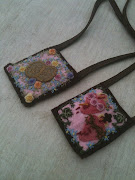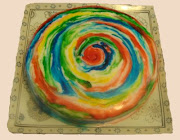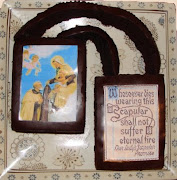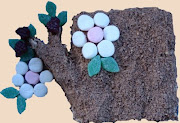 Image HT: Stocks by Sally Fallon
Image HT: Stocks by Sally Fallon
To build upon my last posting about my winter inititives, I'm sharing the recipes for my stocks, soups and casseroles. Though in this post I'll start with stocks only, there is alot to say about them!
I use to make a 14litre pot of lamb stock and chicken stock but I tend to make chicken only these days..I've sort of gotten into the habit of this for no particular reason. I'll share both recipes though, I have modified them from the Nourishing Traditions book.
Sally Fallon, author of Nourishing Traditions quotes this about broths:
"Good broth will resurrect the dead," says a South American proverb. Said Escoffier: "Indeed, stock is everything in cooking. Without it, nothing can be done."
A cure-all in traditional households and the magic ingredient in classic gourmet cuisine, stock or broth made from bones of chicken, fish and beef builds strong bones, assuages sore throats, nurtures the sick, puts vigor in the step and sparkle in love life--so say grandmothers, midwives and healers. For chefs, stock is the magic elixir for making soul-warming soups and matchless sauces.
In folk wisdom, rich chicken broth-the famous Jewish penicillin-is a valued remedy for the flu. The 12th-century physician Moses Maimonides prescribed chicken broth as a treatment for colds and asthma. Modern research has confirmed that broth helps prevent and mitigate infectious diseases. The wise food provider, who uses gelatin-rich broth on a daily or frequent basis, provides continuous protection from many health problems. "
Chicken Stock.
I start with my 6 chicken frames, organic and free range. I tend to believe that it is important to track down a supplier of at least free range frames but ones that have not been fed hormones and antibiotics, that would be a must for me, I don't want hormones and antibiotics that are most likely stored in the marrow, leaching out into my glorious, life-giving stock!
I put the 6 frames into my 14litre pot and I fill it will filtered water and pour about a cup of apple cider vinegar into the water and let stand for an hour. The vinegar helps the calcium to release from the bones more easily.
I then throw in the following ingredients, two or three carrots, I don't peel them or cut the ends, just all chopped up roughly. Two or three celery sticks including the leafy end, nothing wasted, all chopped. Two onions, peeled the roughly chopped. Then I add a bunch of fresh thyme. If you can get a bit of thyme growing in your garden that would be a continual cheap option..while you are at it, grow some parsley, because they are your two main stock herbs. Don't throw your parsley in yet though. Now I would also sometimes throw in some dried nettle and dried comfrey herbs - I particularly recommend the dried nettle if you can get some and be liberal with it, a handful. The herbalist Culpepper recommends you add calendula flowers to your broth:
"The flowers, either green or dried, are much used in possets, broths, and drink, as a comforter of the heart and spirits, and to expel any malignant or pestilential quality which might annoy them."
And then this quote:
"It has been cultivated in the kitchen garden for the flowers, which are dried for broth, and said to comfort the heart and spirits.
Fuller writes: The yellow leaves of the flowers are dried and kept throughout Dutchland against winter to put into broths, physicall potions and for divers other purposes, in such quantity that in some Grocers or Spicesellers are to be found barrels filled with them and retailed by the penny or less, insomuch that no broths are well made without dried Marigold.'
Once the hour is up I turn on the stove and get the stock cooking, within half and hour you will get alot of thickish, grey scum rising to the top, skim it off as it spoils the flavour of your stock.
Then you boil for a minimum of seven hours or as long as you like, I tend to boil anything from 10 to 24 hours. I will often have the stock boiling through the night, put it on in the evening, ready to take off in the morning. In that last 15 mins you throw in your sprig of parsley this will add additional mineral ions to the stock.
I then strain the fluid from the ingredients. Take from your ingredients all the lovely chicken meat and freeze it for a future recipe you would like to make with it. Or if you have an industrial blender (Vita Mix) like we have, you can stick the WHOLE LOT of the remaining stock ingredients into the blender in a few lots and blend it until it looks like a pate. I bag it in little cliplock bags and give it to my mother to feed her dog, if you have animals and you want to keep them well, can you think of anything better? Nothing is wasted then.
I stick my stock into the fridge or even the freezer, still in a pot or pots of some sort so as to skim the fat off the top as it rises and sets. When I say the freezer, not to let it freeze at this stage but to speed up the fat rising and setting to the top so I can skim it off. The fat can be popped into jars and kept in the fridge, making a great fat for cooking.
Once the stock is skimmed of fat and cool, I bag it into varying sized cliplock bags, cup sized bags when I need only a cup of stock for a recipe. Then bigger bags containing 4 cups of stock, I mark the bag 'casserole' that will be the base for one casserole. Then the biggest cliplock bags I fill with stock (I'm not sure of how many cups exactly but I'd say at least 10?) This bag is used for a big pot of soup (I use my 14litre pot for cooking it, though the soup might not come to the very top) and usually I'll get 2 to 3 soup meals for a family of 8 from that. I feel this is a fairly ordered system which is important if you are going to keep this up on a regular basis, efficiency and order, it keeps me sane and making it.
Here is my old recipe for making a lamb stock (or beef):
For a 14 litre pot I think I was popping in 2 to 3kgs or so of lamb necks (my favourite choice of bone) I'd get the butcher to par off as much meat as he could, knowing there would still be some on the necks, which is perfect.
I used exactly the same ingredients as the chicken stock above and the method of making it. The only difference being, I'd put all the neck bones on a tray and brown them in the oven first before adding it to the stock to draw with the apple cider vinegar. You would probably cook your lamb/beef stock for a bit longer than the chicken, considering the difference in size of bones. When I finish a chicken stock the bones will crumble completely when touched - that's what you want. The lamb or beef bones, if cooked long enough will look sort of hole-ridden. Alot of goodness has been leached out of those bones!
You know you have made a particularly FABULOUS pot of stock when it is been sitting in the fridge for some time or you look at it before it freezes completely and it is gelatinous, that's what you want!!! That gelatin is the life-force of your stock!
Sally Fallon once again writes about the benefits of gelatine:
"Dr. Francis Pottenger, author of the famous cat studies as well as articles on the benefits of gelatin in broth, taught that the stockpot was the most important piece of equipment to have in one's kitchen.
It was Dr. Pottenger who pointed out that stock is also of great value because it supplies hydrophilic colloids to the diet. Raw food compounds are colloidal and tend to be hydrophilic, meaning that they attract liquids. Thus when we eat a salad or some other raw food, the hydrophilic colloids attract digestive juices for rapid and effective digestion. Colloids that have been heated are generally hydrophobic-they repel liquids, making cooked foods harder to digest. However, the proteinaceous gelatin in meat broths has the unusual property of attracting liquids-it is hydrophilic-even after it has been heated. The same property by which gelatin attracts water to form desserts, like Jello, allows it to attract digestive juices to the surface of cooked food particles.
The public is generally unaware of the large amount of research on the beneficial effects of gelatin taken with food. Gelatin acts first and foremost as an aid to digestion and has been used successfully in the treatment of many intestinal disorders, including hyperacidity, colitis and Crohn's disease. Although gelatin is by no means a complete protein, containing only the amino acids arginine and glycine in large amounts, it acts as a protein sparer, allowing the body to more fully utilize the complete proteins that are taken in. Thus, gelatin-rich broths are a must for those who cannot afford large amounts of meat in their diets. Gelatin also seems to be of use in the treatment of many chronic disorders, including anemia and other diseases of the blood, diabetes, muscular dystrophy and even cancer."








































































































7 comments:
Just a question about your fabulous recipe. If you skim off the fat, why doesn't the gelatin go with it? Or, in other words, how do you make sure it doesn't?
Thanks so much for sharing this, my family will love it. Actually,the kids will probably just want the stock with nothing else added.
Teresa
Thanks Anne! I am hoping to feel well enough to have a couple of stock days this week
I have never made stock before. When you say "chicken frames", do you mean just the bones or a whole chicken with all the meat on it? I am trying to cook healthier for my family and I cannot wait to try this! Thanks for sharing your recipe.
Sorry Teresa I didn't get back to your comment sooner...no the gelatin is in the liquid, the fat is solid or semi-solid, so quite separate from the rest of the stock.
When I go to my butcher they sell the whole chicken with all the meat off it...so just the chicken skeleton, I call these frames, you can ask your local butcher about these.
Thank you Anne for this post. I have been making the chicken stock, but mine does not become gelatinous. Am I putting too much water and not enough frames? Also, looking forward to your soup and casserole recipes!
Yes, it sounds as though you may be needing some more frames, how long did you cook for?
Thank you Anne,
I cook it anywhere from 12-24 hours. I will try adding more frames next time. Blessings-
Post a Comment